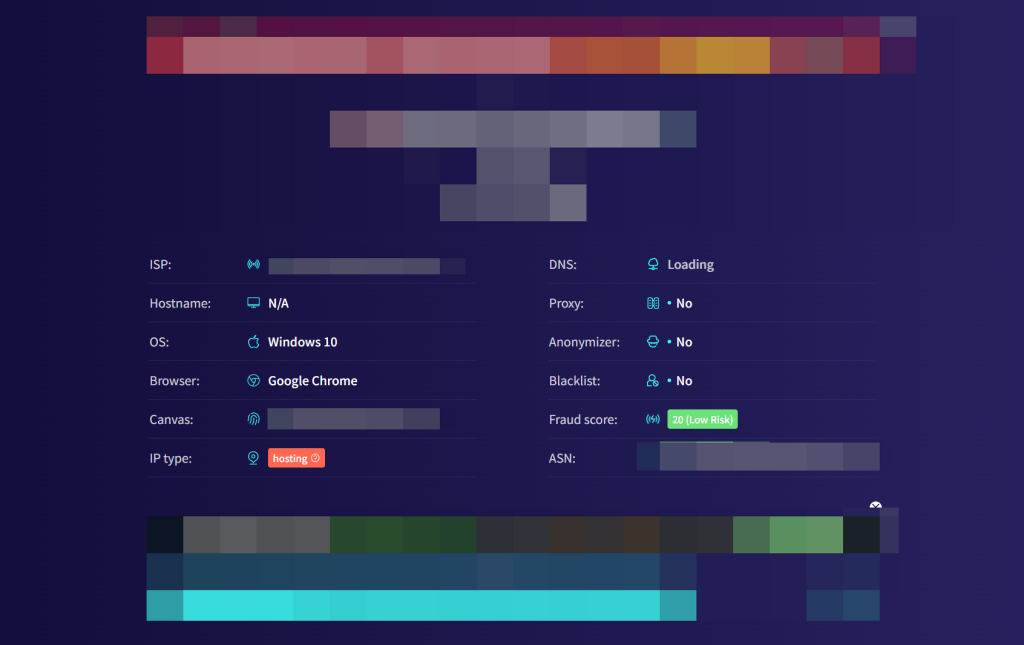
In the digital world, your IP address functions like your “ID card” on the internet. It not only represents the origin of your access but also carries your activity history — from browsing webpages and registering accounts to posting comments and making payments. That’s why the concept of IP cleanliness is becoming increasingly important. Whether you’re running social media operations, web scraping tasks, ad verification, or account management, a clean and trusted IP often determines whether your business can function properly.
IP cleanliness refers to whether an IP address is “clean” and not listed on blacklists by major websites or service providers. Simply put, a clean IP has not been abused, not been banned, and retains full access and account operation permissions.
If an IP was previously used for spam registrations, aggressive scraping, malicious attacks, or other non-compliant behavior, it might have triggered the risk control mechanisms of target websites and ended up blacklisted. Once this happens, even if you change your device or account, using this “flagged” IP will likely lead to restricted access or operations.
🧠 In short: A clean IP = a smooth and unrestricted pass to the internet.
Using flagged or low-quality IPs in scraping tasks can easily trigger anti-bot defenses, resulting in IP bans, failed data capture, or even permanent blacklisting.
Clean residential IPs simulate real users from various regions, helping verify keyword rankings and ad placements accurately. Using blacklisted IPs can lead to distorted data, failed verifications, and wasted ad spend.
To support overseas marketing and operations, businesses often need to create multiple social accounts (e.g., Instagram, Facebook, Craigslist). If using abused or low-quality IPs, registration might fail or be banned shortly after. Platforms treat such IPs as suspicious and enforce strict controls.
Abused IPs may have been involved in cybercrime, making them potential targets of attacks or tracking. For secure operations such as remote work, automation, or API access, it’s essential to choose IPs with high cleanliness and trustworthiness.
Want to know if your current IP is clean? Try the following:
✅ 1. Search Engine Test
Frequent CAPTCHA challenges while using Google may indicate that your IP is associated with unusual behavior.
✅ 2. Visit Secure Forums
Try accessing platforms like BlackHatWorld or Reddit, which use Cloudflare protection. If you often see “browser checks” or blocked access, your IP may be flagged.
✅ 3. Account Registration Test
Try creating accounts on platforms like Twitter, Instagram, or Gmail. Watch for warning signs:
If these occur frequently, your IP might be blacklisted.
✅ 4. Use IP Cleanliness Testing Tools
Check your IP status using these websites:
These tools can display IP location, anonymity level, blacklist status, and whether it’s a residential IP.

⚠️ Note: Results are for reference only. Each platform has its own risk control standards. The best way is still to test under real business scenarios.
Avoid free or suspiciously cheap proxies. Opt for reputable vendors like Cliproxy, which offer stable, clean, high-anonymity residential IPs with HTTP/SOCKS5 support.
Set reasonable request intervals, use fingerprint browsers for multi-account environments, and avoid abnormal behaviors like mass registrations or identical browsing paths.
Avoid logging into multiple social media accounts with the same IP or switching regions too frequently. Consistent usage patterns help build trust and reduce flagging risk.
In the internet world, your IP is your digital passport. A clean, trustworthy IP unlocks stable access, reliable accounts, and accurate test data. A flagged IP, on the other hand, could mean slow access, blocked services, or failed campaigns.
✅ Whether you’re scraping data, running ads, managing social accounts, or testing global networks — IP cleanliness is a must-have capability.
Start by testing your IP’s health now!
Or upgrade to Cliproxy residential proxies to ensure pure, reliable access — and operate with peace of mind.
Start your Cliproxy trial